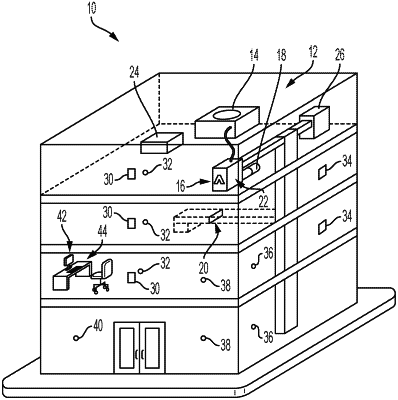| CPC F24F 11/32 (2018.01) [F24F 11/49 (2018.01)] | 20 Claims |

|
1. A system for scoring an atmospheric environment within a building, the system comprising:
a processor;
computer-readable memory encoded with instructions that, when executed by the processor, causes the system to:
receive a first signal from a first sensor, the first signal indicative of thermal comfort;
receive a second signal from a second sensor, the second signal indicative of ventilation;
receive a third signal from a third sensor, the third signal indicative of air quality;
convert the received first, second, and third signals to first, second, and third normalized scores, respectively, wherein:
the first normalized score is equal to a predetermined normalized acceptable level when the first signal indicates that the thermal comfort is equal to an acceptable thermal comfort level;
the second normalized score is equal to the predetermined normalized acceptable level when the second signal indicates that the ventilation is equal to an acceptable ventilation level; and
the third normalized score is equal to a predetermined normalized acceptable level when the third signal indicates that the air quality is equal to an acceptable air quality level,
wherein at least one of the acceptable thermal comfort level, the acceptable ventilation level, and the acceptable air quality level are established by a building certification standard; and
send a signal to equipment that effects a change in one of thermal comfort, ventilation, or air quality in response to the first, second, or third normalized score, respectively, being less than a trigger threshold for remedial action.
|